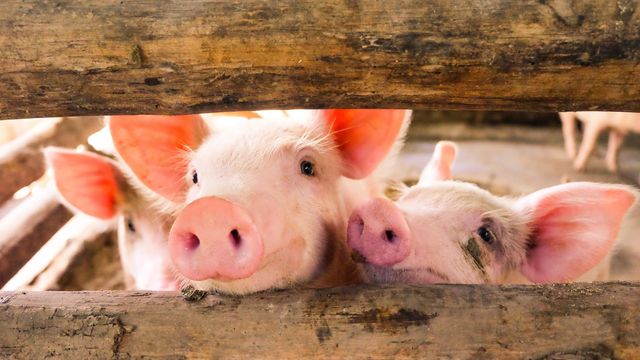Researchers have created pigs that are resistant to classical swine fever (CSF), a highly infectious and often fatal disease that poses a major threat to pig farming worldwide.
Gene-edited pigs exposed to the virus remained healthy, while unedited animals showed typical signs of disease, a study found.
The genetic change provided complete protection against infection, with no observable impact on the animals’ health or development, experts say.
Researchers say the work demonstrates that precise gene editing can prevent infection by disrupting a pig protein the virus relies on to make copies of itself within the cells of the pig.
The findings offer a promising route to bolstering disease resilience in livestock, they add.
Precision edit
Researchers, from the University of Edinburgh’s Roslin Institute, made a targeted change to a gene responsible for producing a protein called DNAJC14, which plays a critical role in the replication cycle of pestiviruses – the virus family that includes CSF.
Studies had previously shown that altering a single amino acid in this protein blocks the virus from processing its own proteins, preventing it from reproducing in pig cells.
Cells carrying the edited gene did not support replication of classical swine fever or other related pestiviruses found in pigs and cattle.
Disease control
While CSF is not currently present in the UK, it continues to cause severe outbreaks in parts of the world, with major economic consequences for farmers. Existing vaccines can reduce transmission, but controlling the disease remains difficult due to its persistence and ability to spread between wild and domestic pigs.
The team, supported by Edinburgh Innovations – the University’s commercialisation service – says that gene editing could form part of a broader strategy for disease control in farmed animals, used alongside vaccination and biosecurity measures. The same genetic edit could potentially be applied to other livestock species to guard against related viruses, including those affecting cattle and sheep.
The research is published in the journal Trends in Biotechnology, in collaboration with colleagues from the Animal and Plant Health Agency (APHA), who provided the high containment laboratories, and the University of Lubeck, Germany. The work was supported by animal genetics company Genus and by a UKRI BBSRC National Bioscience Research Infrastructure grant and facilitated by the Large Animal Research and Imaging Facility at the University of Edinburgh.

